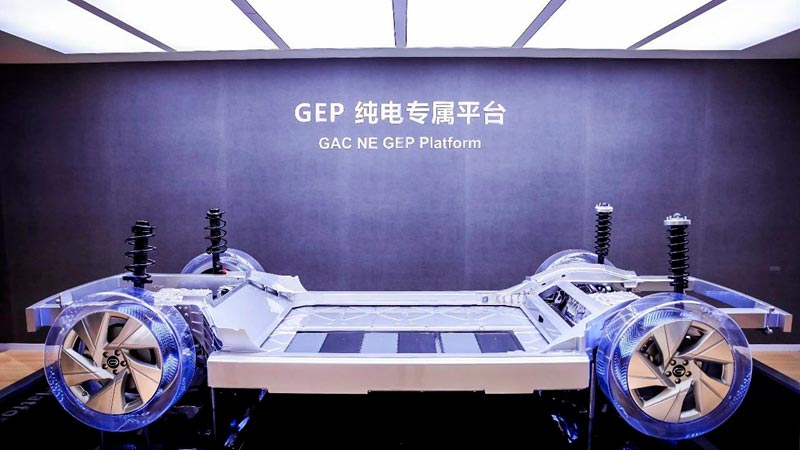A few days ago, GAC presented to the public GAC Tech Day 2020, an event that shows the group’s technologies and possible collaborations with other brands. Let’s not forget that GAC (Guangzhou Automobile Group Co) is known for its production of Honda-branded cars with this Japanese automaker. Still, the company has a total of five foreign partners – more than most Chinese automakers.
These alliances allow it to manufacture foreign brand products for sale in China. These brands include Fiat, Honda, Isuzu, Mitsubishi, and Toyota. Other brand names associated with GAC are Everus, for consumer vehicles, and Hino, we even saw a preview with the GAC AION V that gave us 600 km under the NEDC cycle and its 5G connection.
At the event, he taught several exciting things, from his hydrogen-based model, the GEP 2.0 and GPMA platforms, and 3DG technology for Graphene’s manufacture.
Hydrogen fuel cell
The GAC Group gave the first glimpse of its first vehicle model equipped with a hydrogen fuel cell, the Aion LX.
Built on the GEP (GAC Electric Platform) 2.0, this new proposal shares a similar aspect to the Aion LX. Regarding its powertrain solution, the hydrogen model boasts a maximum output of 150 kW (201 hp). It mounts a permanent magnet motor capable of delivering a maximum torque of 350 Nm. At the same time, autonomy reaches more than 403 miles under the NEDC homologation cycle with each charge of its hydrogen tanks.
According to Feng Xingya, president of the GAC Group, the Chinese manufacturer will start the first pilot tests of its hydrogen models this year, indicating that they are still far from their possible arrival on the market.
GEP 2.0 platform
Meanwhile, GAC Group also introduced GPMA (GAC Global Platform Modular Architecture) and GEP platforms, targeting traditional combustion vehicles and purely electric vehicles. The GPMA fits the development of saloons, SUVs, MPV, PHEV and HEV and is compatible with powertrains such as conventional engines and PHEV and HEV power systems.
GAC Motors font
The GEP 2.0 platform, focused on pure electrical models (BEV), uses high energy density cells, a highly integrated modules architecture, and high-precision BMS to create a low consumption and high autonomy system. Furthermore, the platform described as “high voltage” (we can think of 800 volts as a standard) will allow the development of an ultra-fast charging system that should reach a figure close to 300 kW.
3DG and Graphene
The GAC Group also showcased 3D structural Graphene (3DG) production technology at Tech Day. The company noted that it began researching graphene-scale production as early as 2014, and to this day, it has obtained 3DG’s manufacturing technology with independent intellectual property rights.
One of the characteristics of Graphene is the outstanding electrical conductivity and the unique 3D structure, GAC has developed a super fast-charging battery that can be charged up to 80% of its capacity in 8 minutes and reach a range of 190 miles on one charge in 10 minutes. A battery that, as usual, does not have a date of arrival on the market.

